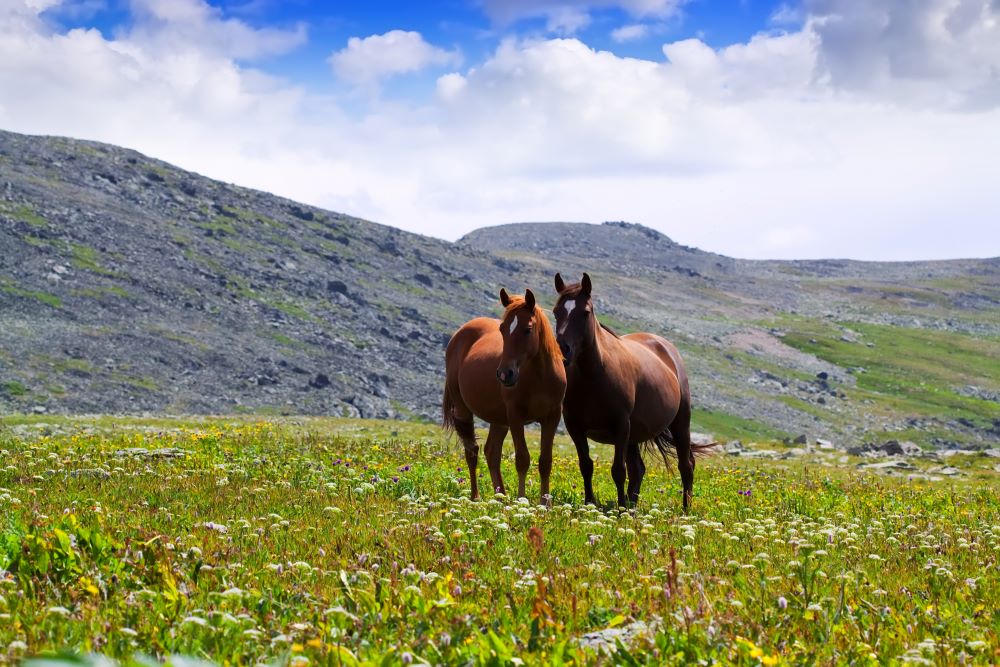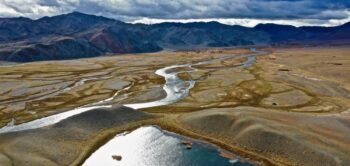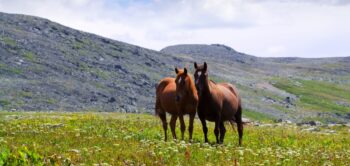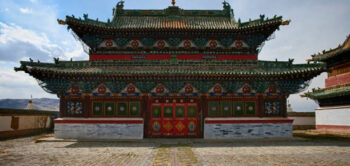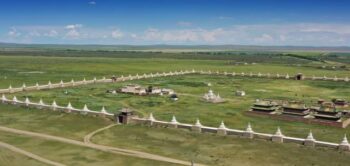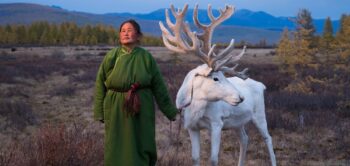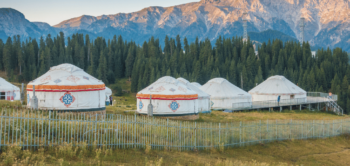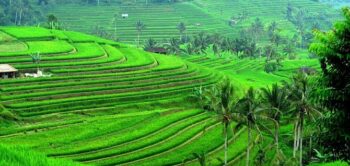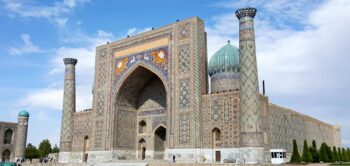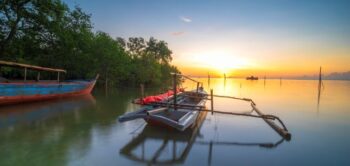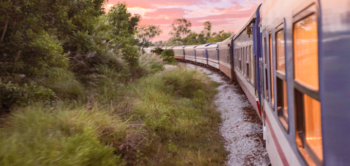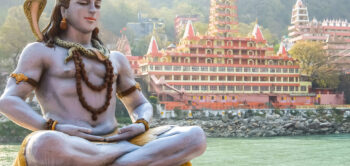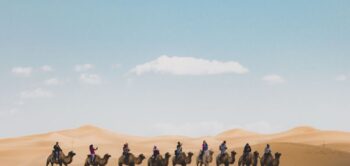Pathways of Mongolia: A 19-Day Cultural & Spiritual Adventure
Tour Detail
Highlights of the Trip
Prepare for a transformative 19-day expedition into the heart and soul of Mongolia, a land where spirituality and tradition have woven a captivating tapestry through the ages. This unique tour beckons those seeking deep cultural immersion, an exploration of spirituality, shamanism, history, Buddhism, and the enigmatic roots of ancient religions.
The adventure commences with the vibrant Danshig Naadam Festival, an authentic celebration of Mongolian heritage. Here, you’ll witness traditional games, dance, and rituals that connect us to the soul of this remarkable nation. Venturing into the Semi Gobi Desert, you’ll live alongside a nomadic family, experiencing their customs and absorbing the wisdom of generations. Stay in the wondrously beautiful Orkhon Valley amid green landscape vistas and see impressively serene waterfalls. Kharkhorin city and Erdenezuu Monastery, former capital of the Mongol Empire, await with their awe-inspiring Buddhist architecture and echoes of history’s whispers. At the Tsenher Hot Springs, we’ll bask in healing waters while glimpsing nomadic life. Your path then leads to the Tsaatan reindeer herders and shaman, a unique cultural encounter like no other. Delve into the mystical realm of Shamanism, meeting with its practitioners and learning their ancient ways. Camp for a series of nights under the starlit Mongolian sky with the Darkhad Shaman, witnessing and taking part in rituals, and forging a profound connection to the spirit of this land. Round off the final days of your unparalleled adventure with visits to the magnificent Uran Uul volcano, an exploration of Amarbayasgalant Monastery in its serene grandeur, and the magical embrace of Terelj National Park and Arayabal Meditation Temple. Finally, stand in awe before the colossal Genghis Khan Equestrian Statue, a symbol of Mongolia’s enduring legacy. This extensive cultural and religious tour is a true expedition of the heart, where the past and present converge to create an unforgettable odyssey through the soul of Mongolia.
Destinations and the Landmarks / Sights to Visit
Ulaanbaatar
- Gandan Buddhist Monastery: Founded in 1838, it is home to over 150 monks and serves as the patriarchal monastery of Mongolian Buddhism.
- National History Museum: This is considered to be one of the oldest and largest museums in Mongolia, with its collection spanning over 300,000 artifacts.
- Chinggis Khaan Museum: This museum is dedicated to the life and legacy of Chinggis Khaan, the founder and emperor of the Mongol Empire.
- Amarbayasgalant Monastery: Built in the 18th century, this magnificent monastery is considered one of the most important and well-preserved monasteries in Mongolia.
- Chinggis Khan Horse Statue: Standing at a towering height of 131 feet, the statue is a testament to the incredible legacy of Chinggis Khan.
Semi Gobi Desert
- The largest desert in Asia and one of the most interesting and unique landscapes in the world.
Kharkhorin City
- Erdenezuu Monastery: This ancient monastery, believed to be the first Buddhist monastery in Mongolia, was built in 1586 by Altai Khan.
- Tsenher Hot Spa/Spring: The natural spring water here is known for its therapeutic properties and is believed to have healing effects.
Khuvsgul
- A remote area of northern Mongolia inhabited by Siberian nomads, Tsaatan reindeer herders and Shaman mystics.
Darkhad Valley
- Tsagaan Nuur: The focal point of Tsagaan Nuur is the crystal-clear lake, surrounded by snow-capped mountains and lush green meadows.
Murun
- Uran Uul: An extinct volcano with energy and beauty beyond at the altitude of 1686 meters above sea level.
Cultural Experiences & Activities of this Holiday
Danshig Naadam Festival (Date dependent): Witness the enchanting Tsam Dance ceremony and various Buddhist rituals here. The Danshig Naadam Festival, dedicated to Zanabazar, Mongolia’s first Buddhist leader, showcases ancient Buddhist traditions such as the Tsam dance. This capital city’s religious mask dance, also known as ‘Khuree Tsam,’ was first introduced in the early 18th century. The dancers don masks to embody the movements of gods and deities, bringing a sense of their physical presence on Jambutiva (Tibetan for ‘earth’). The site also hosts activities of the Naadam Festival, including Mongolian wrestling, horse racing, and archery.
Semi Gobi Desert – Mongolian Nomadic Life: Spend time with a traditional Nomadic Family. For centuries, the Semi Gobi Desert has been the home of nomadic tribes, who have adapted to the relentless nature of the desert and built a resilient lifestyle.
Semi Gobi Desert – Horse/Camel Ride: Enjoy a 1-hour horse or camel ride through this magnificent destination. Horses and camels have long been integral to the nomadic lifestyle of the Mongolian people. They are well adapted to the harsh desert environment and provide the perfect mode of transportation for traversing the vast expanse of the Semi Gobi Desert. Riding on horseback or camelback allows visitors to immerse themselves in the natural surroundings and witness the beauty of the desert in a unique way.
Renchinlkhumbe Village: Meet Darkhad Shaman. This picturesque village is home to a community of nomadic herders who have been living there for generations. The village is known for preserving its traditional way of life, with many of the residents still living in traditional ger tents and practicing the age-old tradition of herding livestock.
Meet Reindeer Herders: Experience Reindeer Herder’s lifestyle and meet Tsaatan Shaman. You will also trek and horse ride. These adventures allows you to witness authentic events, observe how shamans connect with spirits, and learn about their practices. We also have the opportunity to experience the unique lifestyle and traditions of the tsaatan people, who have their own distinct religion, language, and customs that set them apart from other Mongolian cultures.
Terelj National Park: Here you can experience the tranquil beauty of the Ariyabal Meditation Temple. Take a short hike to reach the temple and bask in the stunning views of the national park. The temple also provides a serene sanctuary for meditation, perfect for escaping the heat and soaking up the positive energy of the surroundings.
Local Cuisine and Traditional Dishes to try while in Mongolia
During this tour, numerous opportunities will arise for you to savour the authentic local cuisine, whether from the menus of included meals or from your own culinary exploration during your free time in the itinerary. Indulge in traditional dishes that showcase the rich flavours of the region, including aaruul, which is made from dried and hardened yogurt and can be consumed as a snack or used as an ingredient in other dishes. Other dishes include “Buuz” (steamed dumplings), “khorkhog” (meat and vegetable stew), and “tsuivan” (stir-fried noodles).
Accommodation of this Tour
Accommodation is included during this tour.
Itinerary
Day 1: Ulaanbaatar Arrival & City Tour (depending on arrival time)
Pickup from New Ulaanbaatar International airport. Transfer to hotel (if needed) and check in at hotel in Ulaanbaatar. Depending on flight times possible city tour including visit to Gandan Biggest Buddhist Monastery, National History Museum and Chinggis Khan (Genghis Khan) Museum.
Days 2: Danshig Naadam Festival
Over the next two days, immerse yourself in the Danshig Naadam Festival. The Danshig Naadam Festival is a highlight of the Mongolian cultural calendar, celebrated annually in the summer months. This festival is one of Mongolia’s most important cultural events, with a long-standing tradition of displaying the country’s best athletic and artistic traditions. During this festival, Mongolian people from all walks of life come together to celebrate their heritage. The activities of the festival include traditional wrestling, horse racing, archery, and other traditional games.
Breakfast. Pickup from hotel. Drive to Danshig Naadam Festival in the west of Ulaanbaatar city (the festival will be held on July 11th-12h, 2024). Enjoy two days of the festival. After festival, return to hotel for overnight stay.
The Danshig Naadam Festival is a wonderful opportunity for people to gain an understanding of the Mongolian culture and appreciate its unique heritage. It is also an opportunity for people to dress in traditional Mongolian costumes and partake in traditional foods. The festival provides an opportunity for Mongolians to honour their ancestors, share their unique culture, and strengthen ties between different communities.
Enjoy traditional foods such as Khuusuur (deep-fried dumplings made with ground beef, onion, and garlic), Tarag (type of yogurt), and Tsuivan (a noodle dish).
At the Danshig Naadam Festival, see the Mythical Tsam Dance ceremony and various Buddhist rituals. First introduced in the early 18th century, this dance sees the dancers wear traditional masks while performing the movements of gods and deities, to represent the physical arrival of the gods on Jambutiva (“earth” in Tibetan).
✓ Breakfast
Day 3: Nomadic Family in Semi Gobi Desert
Meet a Mongolian nomadic family today in the Semi Gobi Desert. Get a truly special insight into their life and traditional culture and customs and try horseback or camel riding through the desert.
Enjoy breakfast. Pickup from hotel and drive to Semi Gobi Desert – 280km. Visit nomadic family. Enjoy an hour camel or horse ride through the Semi Gobi. Return to hotel.
Today you will meet a Mongolian nomadic family in the Semi Gobi Desert; a cultural immersion like no other. Share traditional meals, witness horsemanship, and listen to ancient stories offering a profound glimpse into their timeless way of life.
Taste traditional nomadic cuisine today, such as “buuz” (steamed dumplings filled with minced meat and various seasonings).
Savour the sights of the Semi Gobi Desert, a partially arid desert surrounded by a green mountainous backdrop.
✓ Breakfast, Lunch, and Dinner.
Days 4: Kharkhorin City Transfer & Erdenezuu Monastery
The next two days promises an unmissable blend of history, spirituality, and cultural immersion. Explore Kharkhorin city and Erdenezuu monastery today. Discover ancient relics, visit the historical museum, and soak in the tranquillity of the monastery’s courtyards. Don’t miss the chance to witness traditional rituals and admire the architecture that reflects Mongolia’s enduring heritage.
After breakfast, drive to Kharkhorin city. Visit Erdenezuu monastery. More sightseeing. Return to hotel. Same on following day but with different sightseeing options.
When you visit Kharkhorin city and Erdenezuu monastery today, you’ll step into Mongolia’s rich history. Kharkhorin, once the capital of the Mongol Empire, boasts archaeological wonders, while Erdenezuu Monastery, founded in 1586 and the first Buddhist monastery in Mongolia, offers insight into Mongolian Buddhism with its ornate temples and serene atmosphere. Exploring these sites is a journey through time and spirituality, a unique cultural experience you won’t forget.
While in Kharkhorin city and Erdenezuu monastery, savour delicious local delicacies such as “khorkhog” (a hearty mutton stew cooked with hot stones) and “aaruul” (dried curd snacks).
As you explore Kharkhorin city and Erdenezuu monastery, be sure to admire the iconic Turtle Rock, a symbol of Mongolia’s natural beauty, and the ancient stone monuments, like the Ovoo, representing spiritual significance.
✓ Breakfast, Lunch, and Dinner.
Day 5-6: Orkhon Valley Tour
Experience the beautiful landscapes of Orkhon Valley a revered UNESCO World Heritage site and hiking around the valley will visit waterfalls and places of natural beauty to enrich the soul.
After breakfast drive to Orkhon Valley, visit and stay with a nomadic family in yurts within the valley.
The nomadic families of the valley really know the bests spots around and the second day will be spent exploring the lives of the family and others in the yurt camp. The best way to immerse yourself in Mongolian Culture and feel part of the community.
Local dishes like “khorkhog” (a traditional mutton and vegetable dish) are just one of the examples of the typical foods of the family.
The local waterfalls nestled within the valleys are real tranquil havens of pure peace and make you feel at one with your naturally spectacular surroundings, the biggest being Orkhon Waterfall.
✓ Breakfast, Lunch, and Dinner.
Day 7: Tsenhar Hot Springs
Enjoy a relaxing day today as you visit the Tsenhar hot spa, one of the most famous hot springs in Mongolia.
After breakfast, head to Tsenher hot spa. Relax or hike. Return to hotel.
Soak up the tranquil, healing energy today in the Tsenher hot spa. The history of these springs’ dates back centuries, cherished by nomadic tribes for their healing properties. These geothermal springs have been a natural sanctuary, providing warmth and relaxation to travellers and locals alike.
Tuck into traditional dishes such as “tsuivan” (stir-fried noodles with meat and veg) and more unique dishes to the local region.
Nestled in the heart of Mongolia – a region popular for its extinct volcanoes and natural springs – Tsenher hot springs are a geothermal oasis. Surrounded by meadows, these healing waters offer relaxation and respite.
✓ Breakfast, Lunch, and Dinner.
Day 8: Tsaatan Reindeer Herders & Siberian Nomads
Today you will travel to a remote area of northern Mongolia, home to Siberian nomads, Tsaatan reindeer herders, and Shaman mystics.
Enjoy breakfast. Travel to Khuvsgul to begin Shaman tour. Stay in Murun city near Khuvsgul lake.
See up close the lifestyles of genuine nomadic people in this remote area of Mongolia. Learn from the Tsaatan reindeer herders, Siberian nomads, and Shaman mystics.
Try local food such as “borts” (air-dried meat), and “buuz” (steamed dumplings).
Khuvsgul boasts stunning natural beauty. You can explore Lake Khuvsgul, Mongolia’s largest freshwater lake, visit the Khatgal village, and venture into the remote taiga, home to diverse wildlife and indigenous cultures. Additionally, there’s the breathtaking Renchinlkhumbe village and the picturesque Uran Togoo volcanic crater.
✓ Breakfast, Lunch, and Dinner.
Days 9-10: Tour of Taiga Mountains & Darkhad Valley
On day 9 your shamanic journey truly begins as you head to the north of the Taiga mountains, passing the 13 ovoo mountain pass to enter the great Darkhad valley and meet the Darkhad shaman.
Begin the Shaman trail. Head north to the Taiga Mountains. Drive to Renchinlkhumbe village. Meet Darkhad shaman in the Darkhad valley. Stay in a tent overnight for the coming two nights as you travel.
Staying with the Darkhad shaman offers an intimate encounter with Mongolia’s spiritual traditions. Participate in shamanic rituals, experience spiritual shamanic healings, listen to ancient stories, and gain profound insights into their mystical world.
Savouring local cuisine with the Darkhad shaman involves unique dishes like “boodog”, where meat and vegetables are cooked within a heated animal carcass.
Staying with the Darkhad Shaman offers a chance to explore the remote beauty of Northern Mongolia. The Darkhad Valley sits between the Khoridol Saridag Mountain Range and the Ulaan Taiga Forest. Discover breathtaking landscapes, witness reindeer herding, and gaze at the star-studded skies of this culturally rich region.
✓ Breakfast, Lunch, and Dinner..
Days 11-14: Tsaatan Local Life With Shamans & Horseback Exploration
Over the next four days, meet the Tsaatan and shamans and discover more about their customs and traditions. Trek or horse ride and load your luggage onto horseback as you leave your vehicle team to venture into an even more remote landscape.
Head north to meet the Tsaatan (reindeer herders) and shamans. Cross from Darkhad valley to Tsagaan Nuur (White Lake). Enjoy a trekking or horse-riding session. Load luggage onto horseback. Spend the next four nights overnight in tented camp near shaman’s home.
These four days offer an unforgettable experience with the Darkhad shaman and Tsaatan reindeer herders. Witness the ways that shamans connect with other spirits and their rituals. Discover the Tsaatans’ lifestyle and traditions too, with their religion, language, and customs that differ from other Mongols.
Tuck into local food prepared by the shaman. Some dishes you might try include “airag” (fermented mare’s milk) or “khorkhog” (hot stone-cooked meat stew).
Trekking the landscapes near Tsagaan Nuur with the Darkhad shaman, you’ll see stunning lakeshores, nomadic settlements, and the sacred Burkhan Khaldun Mountain. This extraordinary journey bridges nature, culture, and spirituality.
✓ Breakfast, Lunch, and Dinner..
Day 15: Murun City Transfer
Today it’s time to head back to Murun City. After four days of a wonderful experience camping with the Darkhad Shamans you will probably look forward to resting and getting refreshed at your hotel.
Drive back to Murun. Check in and stay overnight in local hotel.
✓ Breakfast, Lunch, and Dinner.
Day 16: Ulaanbaatar Transfer, Uran Togoo National Park & Uran Uul
The journey back to Ulaanbaatar so you can enjoy some highlights on the way. Today, visit the Uran Togoo National Park and see Uran Uul, an extinct volcano towering 1686 metres above sea level in Bulgan province.
Begin the drive back to Ulaanbaatar. Stop at Uran Togoo National Park on the way and see Uran Uul extinct volcano. Visit a nomadic family and stay overnight.
Staying with a nomadic family near Uran Togoo National Park offers an intimate immersion into Mongolian culture. Share meals, learn traditional crafts, and listen to stories by the campfire under the shadow of this geographical marvel.
Savour hearty fare cooked by a nomadic family, such as “khorkhog” and “aaruul”.
Uran Togoo National Park boasts the mesmerising Uran Uul extinct volcano, an ancient geological wonder. Hike its slopes for panoramic views and explore the beautiful landscapes and diverse wildlife within this special conservation area.
✓ Breakfast, Lunch, and Dinner..
Day 17: Amabayasgalant Monastery
Discover Amabayasgalant monastery today, an architectural beauty built between 1727 and 1737 by the Manchu emporer Yongzheng and one of the three main monasteries in Mongolia. The monastery was built to commemorate Zanabazar, the first Bogd Gegeen leader of Mongolian Buddhism, and renowned sculptor and painter.
Drive to Amarbayasgalant Buddhist monastery. Stay overnight at hotel or with nomadic family.
Visiting Amarbayasgalant Monastery is a profound cultural experience. Witness exquisite Buddhist architecture, observe monks’ daily rituals, and immerse yourself in the spiritual tranquillity of this sacred Mongolian site.
Culinary delights you might find in Amarbayasgalant include “khuushuur” (fried meat pastries), “tsuivan” (stir-fried noodles with meat), and “boortsog” (fried sweet pastries).
Amarbayasgalant Monastery, nestled in Mongolia’s Selenge Province, captivates with its stunning Tibetan-style architecture, adorned with intricate artwork. Explore its serene courtyards and the grand main temple, a testament to Mongolian heritage.
✓ Breakfast, Lunch, and Dinner..
Day 18: Terej National Park & Ariyabal Meditation Temple
Today you will visit the beautiful Terelj National Park, including the Ariyabal Meditation Temple, a Buddhist meditation temple first built in 1810 and sadly destroyed during the religious purge of 1938, but then restored between 2004 and 2007.
Drive to Terelj National Park. Visit Ariyabal meditation temple. Short hike. Return to hotel or stay with nomadic family.
Terelj National Park is an immersion into Mongolia’s nomadic culture. Stay in traditional gers, engage with local herders, and embark on horseback adventures, amidst the park’s breathtaking landscapes.
Try Mongolian cuisine such as “banh” (pan-fried dough pockets filled with meat), “byaslag” (yogurt with curd), and “khushuur” (deep-fried meat pastry).
Terelj National Park is home to iconic landmarks like Turtle Rock, a natural stone formation, and Aryabal Meditation Temple, perched atop a hill, offering sweeping views of this spectacular wildlife in Mongolia.
✓ Breakfast, Lunch, and Dinner.
Day 19: Ulaanbaatar Transfer, Chinggis Khan Statue & Departure Flight
Return to Ulaanbaatar. On the way visit the Chinggis Khan Statue. The site of the statue, Tsonjin Boldog, was chosen due to the legend that Chinggis Khan found a whip in this area. In Mongolia, finding a whip is a sign of fortune and positive destiny. The statue is east facing, the direction of Genghis Khan’s birthplace, and if you look in this direction, you’ll see a small statue of his mother greeting him.
✓ Breakfast and Lunch.
Price
Price: £4,601
– Price per person based on two-people group size.
– The price is subject to availability, based on twin or double room sharing.
– Peak season surcharges may apply during local public holidays.
Please note, this package is an example of our many exciting daily offers. We are happy to check up-to-date prices for the dates and times that suit you for your perfect package holiday, or to tailor or upgrade elements of any package. Please feel free to contact us at enquiry@asiara-holidays.com or call us on 01473 356 000.
Tour Map
FAQs
Frequently Asked Questions:
Ulaanbaatar Arrival & Transfer to Hotel
- What is included in the transfer from Ulaanbaatar Airport to the hotel?
The transfer includes a meet-and-greet service by an English-speaking driver and a comfortable journey passing through Ulaanbaatar to your hotel.
- How long does the journey from the airport to the hotel in Ulaanbaatar typically take?
The journey from the airport to a hotel in Ulaanbaatar typically takes around 30 to 45 minutes, depending on the distance between the airport and your specific hotel, as well as traffic conditions at the time of your arrival.
- Is there Wi-Fi available during the transfer?
This is not typically available during the transfer but can be requested on covering the details of the tour with our team prior to the travel date.
- Are there any rest stops, or bathroom breaks during the journey?
Our drivers are always flexible and can accommodate rest stops if required. We recommend that you use the restroom facilities before leaving the airport to ensure a smooth transfer.
- Can I request a specific hotel for this tour?
We will always work with you to tailor the perfect tour. If there is a specific hotel you would like to stay at, please let us know during booking and we will try and accommodate this. Some tours have specific hotels, but we will always adjust where possible. Please note that the price may be different depending on the hotel you select.
City Tour of Ulaanbaatar
- What is included in the city tour of Ulaanbaatar?
The city tour of Ulaanbaatar typically includes visits to prominent landmarks such as the Gandan Biggest Buddhist Monastery, the National History Museum, and the Chinggis Khan Museum, among others.
- Is the city tour of Ulaanbaatar included in the price of this tour?
Yes, this city tour is included in the price of this tour.
- What is the Gandan Biggest Buddhist Monastery?
The Gandan Monastery is one of the largest and most important Buddhist monasteries in Mongolia. It is known for its impressive architecture, including the towering Migjid Janraisig Statue, and serves as an active centre for Buddhist worship and study.
- What can I expect to see at the National History Museum of Mongolia?
The National History Museum of Mongolia showcases exhibits on the country’s rich history, culture, and heritage. Visitors can explore artifacts, archaeological finds, traditional costumes, and interactive displays depicting Mongolia’s nomadic way of life and historical achievements.
- What is the significance of the Chinggis Khan Museum?
The Chinggis Khan Museum is dedicated to the legendary Mongol leader, Chinggis Khan (Genghis Khan). It offers insights into his life, conquests, and the legacy of the Mongol Empire through exhibits, artifacts, and multimedia presentations.
- How long does the city tour of Ulaanbaatar typically last?
The duration of the city tour of Ulaanbaatar varies depending on the itinerary and specific attractions visited. On average, the tour may last between 4 to 6 hours, including transportation and guided visits to each site.
- Are entrance fees included in the city tour package?
Entrance fees to the Gandan Monastery, National History Museum, Chinggis Khan Museum, and other included attractions are often included in the city tour package. However, how much you can see on this guided tour will vary depending on your flight times, so it is advisable to confirm this with us at the time of booking. We will be able to inform you of exact times, included entrance fees, and what you can expect to see.
- Can I customise the city tour itinerary according to my preferences?
We will always try to accommodate your preferences wherever possible, allowing you to tailor the experience to your interests and schedule. You can discuss any specific requests or preferences with us when booking your tour.
- What should I wear and bring for the city tour of Ulaanbaatar?
It’s advisable to wear comfortable clothing and walking shoes suitable for exploring cultural sites and museums. Don’t forget to bring essentials such as a camera, sunscreen, hat, and water bottle for a comfortable and enjoyable tour experience.
Danshig Naadam Festival
- What is the Danshig Naadam Festival?
The Danshig Naadam Festival is a traditional Mongolian festival celebrated over two days, featuring a vibrant display of cultural performances, sporting events, and traditional ceremonies.
- Are tickets included in the tour price?
Yes, tickets for the Danshig Naadam Festival are included in the price of this tour.
- Where and when does the Danshig Naadam Festival take place?
The festival takes place annually in Ulaanbaatar. Festival dates vary each year, but it usually occurs during the summer months around July. This year the festival will be held on July 11th – 12th, 2024.
- What activities are included in the Danshig Naadam Festival?
The festival includes a variety of activities such as traditional Mongolian wrestling, horse racing, archery competitions, cultural performances including folk music and dance, as well as ceremonial rituals and ceremonies honouring Mongolian heritage and traditions.
- How long does the Danshig Naadam Festival last?
The Danshig Naadam Festival spans two days, with activities and events taking place throughout both days. The festival schedule typically includes morning till evening programs, providing ample opportunities for visitors to experience the festivities.
- Can visitors participate in the sporting events at the Danshig Naadam Festival?
The sporting events such as wrestling, and archery competitions are usually reserved for skilled athletes and participants from Mongolian communities. However, visitors are welcome to observe and enjoy the competitions as spectators.
- Are there cultural performances during the Danshig Naadam Festival?
Yes, the Danshig Naadam Festival features various cultural performances showcasing traditional Mongolian music, dance, and other forms of artistic expression. Visitors can enjoy these performances as part of the festival’s entertainment lineup.
- Are there specific customs or etiquette to follow during the Danshig Nadaam Festival?
While attending the festival, visitors should respect the cultural customs and traditions of Mongolia. This includes dressing modestly, refraining from disruptive behaviour, and asking for permission before taking photographs, especially during ceremonial rituals.
- What should I wear and bring to the Danshig Naadam Festival?
It’s recommended to wear comfortable clothing suitable for outdoor activities and walking. Additionally, bring essentials such as sunscreen, a hat, sunglasses, a water bottle, and a camera or smartphone to capture memorable moments.
- Is there anything else I should know before attending the Danshig Naadam Festival?
Visitors should familiarize themselves with the festival schedule and plan their itinerary accordingly to make the most of their experience. Additionally, be prepared for large crowds and limited seating arrangements, especially during popular events and performances.
- What happens if I purchase this tour outside of the Danshig Naadam Festival dates?
If you book this tour for dates which do not fall during the Danshig Naadam Festival, then we can tailor the itinerary to suit your preferences. There are many other tours and activities available, or you may prefer to enjoy the free time to explore.
Visiting a Nomadic Family in the Semi Gobi Desert
- What is a nomadic family in the Semi Gobi Desert?
A nomadic family in the Semi-Gobi Desert is a group of people who lead a traditional, mobile lifestyle, moving with their livestock to different grazing areas throughout the year. They live in gers (traditional Mongolian tents) and engage in animal husbandry and other traditional practices.
- What can I expect during a visit to a nomadic family?
During your visit, you can expect to experience the nomadic way of life firsthand. This may include learning about traditional herding practices, helping with daily chores such as milking animals or preparing meals, and enjoying hospitality with tea and dairy products.
- What should I bring for my visit to a nomadic family?
It’s advisable to bring essentials such as sunscreen, a hat, sunglasses, sturdy walking shoes, and a water bottle. Additionally, consider bringing small gifts for the nomadic family, such as snacks, toys for children, or necessities.
- Is there a specific etiquette I should follow during my visit?
While visiting a nomadic family, it’s important to respect their customs and traditions. Ask for permission before taking photographs, remove your shoes before entering their ger, and show appreciation for their hospitality with gestures of gratitude.
- Are there any health precautions I should take?
Be mindful of hygiene practices, especially when handling food or interacting with animals. It’s also advisable to bring any necessary medications or personal hygiene products, as medical facilities may be limited in remote areas.
- What language do nomadic families speak?
Nomadic families in Mongolia primarily speak Mongolian. However, some may have basic proficiency in English, especially those who frequently host visitors as part of their livelihood.
- Can I learn about traditional crafts or skills during my visit?
Yes, many nomadic families are happy to share their knowledge of traditional crafts such as felt-making, horseback riding, or dairy processing. You can inquire with your guide or host family about opportunities to learn these skills.
- Can I take photographs during my visit?
Yes, you can typically take photographs while visiting a nomadic family in the Gobi Desert. However, it’s essential to ask for permission before taking photographs, especially of the family members or their belongings, out of respect for their privacy and cultural customs. Additionally, be mindful of the surroundings and avoid photographing anything sensitive or sacred without permission. Always respect the wishes of the nomadic family and follow any guidelines provided by your tour guide or host.
Camel or horseback ride through the Gobi Desert
- Do I need prior experience to ride a camel or horse?
Prior experience is not necessary, as most tours provide trained guides who can assist beginners with riding camels or horses. They will provide basic instructions and ensure your safety throughout the ride.
- What should I wear for camel or horse riding in the desert?
Wear comfortable, lightweight clothing suitable for outdoor activities, such as long pants and closed-toe shoes. It’s also advisable to wear a hat, sunglasses, and sunscreen to protect yourself from the sun.
- Are there age or weight restrictions for camel or horse riding?
Age and weight restrictions may vary depending on the operator and the specific animals available for riding. It’s advisable to inquire with us about any restrictions beforehand.
- Can I take photographs during the camel or horse ride?
Yes, you are usually allowed to take photographs during the camel or horse ride to capture the stunning scenery of the Semi-Gobi Desert. However, it’s essential to check with your guide or host family for any specific guidelines or restrictions.
- What safety precautions are in place for camel or horse riding in the desert?
Trained guides accompany camel or horse rides to ensure the safety of participants. They will provide instructions on how to handle the animals and offer assistance if needed. It’s essential to follow their guidance and instructions for a safe and enjoyable experience.
- Is equipment provided for camel or horse riding?
Yes, all equipment including saddles and riding gear are included.
- Are there restroom facilities available during the camel or horse ride?
Restroom facilities may be limited or non-existent in the desert. It’s advisable to use restroom facilities before embarking on the camel or horse ride and to carry any necessary supplies with you.
- Is camel or horse riding suitable for all fitness levels?
Camel or horse riding in the desert can be physically demanding, especially for extended periods or in hot weather conditions. While most tours are suitable for beginners, it’s essential to assess your fitness level and discuss any concerns with your tour operator before booking.
Visit to Kharkhorin City and Erdenezuu Monastery
- What is Kharkorin City and Erdene Zuu Monastery?
Kharkhorin City is a historic city in Mongolia that was once the capital of the Mongol Empire during the 13th and 14th centuries. Erdene Zuu Monastery, located in Kharkhorin, is one of the oldest and most significant monasteries in Mongolia, known for its rich history and architectural heritage.
- What can I expect to see at Erdene Zuu Monastery?
Erdene Zuu Monastery features a complex of temples, stupas, and walls, showcasing traditional Mongolian and Tibetan architectural styles. Visitors can explore the monastery grounds, admire Buddhist artwork, and witness religious ceremonies.
- Is the entrance fee to visit Erdene Zuu Monastery included?
Yes, there is an entrance fee to visit Erdene Zuu Monastery, which helps support the maintenance and preservation of the site and is included in your tour price.
- What is the significance of Kharkhorin City in Mongolian history?
Kharkhorin City, also known as Karakorum, served as the capital of the Mongol Empire under Genghis Khan and his successors. It was a centre of political, cultural, and economic activities during the empire’s peak.
- What other attractions are there to see in Kharkhorin City?
In addition to Erdene Zuu Monastery, visitors to Kharkhorin City can explore historical sites such as the ruins of the ancient city, the Great Khan’s Monument, and the Kharkhorin Museum, which showcases artifacts and exhibits related to Mongolian history.
- What activities can I do in Kharkhorin City and Erdene Zuu Monastery?
Visitors can participate in cultural activities such as attending Buddhist ceremonies, exploring the surrounding landscape on horseback or camelback, and shopping for souvenirs at local markets.
- What should I wear and bring for my visit to Kharkhorin City and Erdene Zuu Monastery?
Wear comfortable clothing suitable for walking and exploring outdoor sites. Additionally, bring essentials such as sunscreen, a hat, sunglasses, a water bottle, and a camera to capture memorable moments during your visit.
- Is lunch included?
Yes, a delicious lunch is included in your tour.
Orkhon Valley Tour and Nomadic Family Yurt Camp Stay
- What is the Orkhon Valley and why is it significant?
The Orkhon Valley is a UNESCO World Heritage Site located in central Mongolia, known for its stunning natural landscapes, archaeological sites, and cultural heritage. It holds great historical significance as the ancient capital of the Mongol Empire.
- What can I expect during a stay with a nomadic family in yurts?
During your stay, you’ll have the opportunity to experience the traditional nomadic way of life firsthand. This may include helping with daily chores, such as herding livestock, milking animals, or preparing traditional meals. You’ll also have the chance to interact with the family members and learn about their customs and traditions.
- Are there any specific customs or etiquette I should follow while staying with a nomadic family?
It’s important to respect the customs and traditions of the nomadic family. This includes asking for permission before taking photographs, removing your shoes before entering the yurt, and showing appreciation for their hospitality with gestures of gratitude.
- What should I bring for my stay with a nomadic family in a yurt camp?
Bring essentials such as comfortable clothing suitable for outdoor activities, sturdy walking shoes, sunscreen, a hat, sunglasses, and a water bottle. It’s also a good idea to bring small gifts for the nomadic family, such as snacks, toys for children, or necessities.
- Can I participate in traditional activities during my stay with the nomadic family?
Yes, many nomadic families are happy to involve visitors in traditional activities such as milking animals, making dairy products, or crafting handicrafts. You can inquire with your guide or host family about opportunities to participate in these activities.
- What is the best time of year to visit the Orkhon Valley and stay with a nomadic family?
The best time to visit the Orkhon Valley and stay with a nomadic family is during the summer months, from June to August, when the weather is mild, and the grasslands are lush and green. This is also the peak season for tourism in Mongolia.
- Are there restroom facilities available during the stay in yurts?
Restroom facilities may be basic in rural areas, and you may need to use outdoor or makeshift facilities such as pit toilets. It’s advisable to bring personal hygiene products and be prepared for rustic living conditions.
- Can I learn about traditional crafts or skills during my stay with the nomadic family?
Yes, many nomadic families are happy to share their knowledge of traditional crafts such as felt-making, horseback riding, or cooking traditional meals. You can inquire with your guide or host family about opportunities to learn these skills.
- What facilities should I expect at a nomadic yurt camp in the Orkhon Valley?
Facilities at a nomadic yurt camp in the Orkhon Valley typically include traditional yurts for accommodation, communal dining areas, basic restroom facilities, campfire areas for socializing, and opportunities for cultural experiences and outdoor activities such as horseback riding. Some camps may offer limited electricity, drinking water, and guided excursions.
- Is there anything else I should know before staying with a nomadic family in yurts in the Orkhon Valley?
Be open-minded, flexible, and respectful of the nomadic way of life. Embrace the opportunity to connect with nature and learn from the rich cultural heritage of the nomadic people of Mongolia.
Visit to Tsenkhar Hot Springs
- What are the Tsenkhar Hot Springs?
Tsenkher Hot Springs are natural geothermal hot springs located in the Arkhangai Province of central Mongolia. These mineral-rich hot springs are renowned for their therapeutic properties and are a popular destination for relaxation and wellness.
- What facilities are available at Tsenkhar Hot Springs?
Facilities at Tsenkher Hot Springs typically include accommodation options such as ger camps or tourist camps, hot spring pools of varying temperatures, changing rooms, showers, and basic amenities such as restaurants and souvenir shops.
- Are there different pools at Tsenkhar Hot Springs?
Yes, Tsenkher Hot Springs feature several pools with varying temperatures, allowing visitors to choose the pool that best suits their preferences for soaking and relaxation.
- What should I wear and bring for my visit to Tsenkhar Hot Springs?
Visitors to Tsenkher Hot Springs should bring swimwear, towels, sunscreen, and drinking water. It’s also advisable to bring warm clothing for cooler evenings, especially if visiting during the colder months.
- Is the entrance fee to Tsenkher Hot Springs included in the tour price?
Yes the entrance fee to access the hot springs area is included.
- Are there any health benefits to soaking in the hot springs?
Tsenkher Hot Springs are believed to have therapeutic properties due to their mineral content, which may help alleviate muscle tension, improve circulation, and promote relaxation. However, visitors with pre-existing health conditions should consult with a healthcare professional before soaking in the hot springs.
- Are there any cultural or environmental guidelines to follow at Tsenkhar Hot Springs?
Visitors should respect the natural surroundings and cultural customs of the area. This includes avoiding littering, using designated changing areas, and respecting the privacy of other visitors.
- What other activities are available near Tsenkhar Hot Springs?
In addition to soaking in the hot springs, visitors can explore the surrounding area and enjoy outdoor activities such as hiking, horseback riding, and visiting nearby attractions like Tuvkhun Monastery or the Khorgo-Terkhiin Tsagaan Nuur National Park.
- Will lunch be included in the visit to Tsenkhar Hot Springs?
Yes, you will enjoy a delicious lunch. Breakfast and dinner are also included.
Visit to Tsaatan Reindeer Herders & Siberian Nomads
- Who are the Tsaatan Reindeer Herders and Siberian Nomads?
The Tsaatan Reindeer Herders are a small ethnic group living in the remote taiga forests of northern Mongolia and southern Siberia. They have a unique culture centred around reindeer husbandry, traditional crafts, and a semi-nomadic lifestyle deeply rooted in nature.
- What can I expect during my visit to the Tsaatan Reindeer Herders and Siberian Nomads?
During your visit, you can expect to immerse yourself in the daily life and traditions of the Tsaatan Reindeer Herders and Siberian Nomads. This may include participating in reindeer herding activities, learning traditional crafts such as felt-making or archery, and experiencing Shamanic rituals and ceremonies.
- Is it possible to stay overnight with the Tsaatan Reindeer Herders and Siberian Nomads?
Yes, this tour package offers the opportunity to stay overnight with nomadic families in teepees or yurts. This allows visitors to experience firsthand the hospitality of the Tsaatan Reindeer Herders and Siberian Nomads and gain insight into their way of life.
- Can I participate in Shamanic rituals and ceremonies during my visit?
Yes, this tour includes the opportunity to witness Shamanic rituals and ceremonies performed by local Shaman mystics and even participate in these. These ceremonies often involve offerings to spirits, chanting, drumming, and traditional healing practices.
- What should I bring for my visit to the Tsaatan Reindeer Herders and Siberian Nomads?
Bring essentials such as warm clothing suitable for the cold climate of the taiga, sturdy hiking boots, insect repellent, sunscreen, and a camera to capture the stunning scenery and cultural experiences. It’s also advisable to bring small gifts for your hosts, such as food, clothing, or basic necessities.
- Are there any health or safety precautions I should take during my visit?
Be prepared for rugged terrain and variable weather conditions in the taiga. It’s essential to stay hydrated, protect yourself from insect bites, and follow any instructions or guidelines provided by your tour guide to ensure a safe and enjoyable experience.
- Can I learn about traditional crafts or skills from the Tsaatan Reindeer Herders and Siberian Nomads?
Yes, many nomadic families are happy to share their knowledge of traditional crafts such as felt-making, weaving, and woodworking. You can inquire with your guide or host family about opportunities to learn these skills during your visit.
- Is there mobile phone reception or internet access in the taiga?
Mobile phone reception and internet access may be limited or non-existent in the remote regions where the Tsaatan Reindeer Herders and Siberian Nomads reside. It’s advisable to disconnect from technology and embrace the opportunity for a digital detox during your visit.
- What other activities are available during a visit to the Tsaatan Reindeer Herders and Siberian Nomads?
In addition to cultural experiences, visitors can explore the pristine wilderness of the taiga through hiking, horseback riding, birdwatching, and wildlife spotting. It’s also a great opportunity for photography enthusiasts to capture the breathtaking landscapes and unique cultural encounters.
- Are meals included during this tour?
Yes, breakfast, lunch, and dinner are all included.
Taiga Mountains & Darkhad Valley Shamanic Tour
- What is a Taiga Mountains & Darkhad Valley Shamanic Tour?
A Taiga Mountains & Darkhad Valley Shamanic Tour is an immersive journey into the remote wilderness of northern Mongolia, offering the opportunity to explore the stunning landscapes of the Taiga Mountains and the Darkhad Valley while experiencing Shamanic rituals and traditions.
- What can I expect during the tour?
During the tour, you can expect to embark on hiking or horse trekking adventures through the rugged terrain of the Taiga Mountains and Darkhad Valley along the Shaman Trail. You’ll have the chance to witness breathtaking landscapes, encounter nomadic families, and experience the ancient Shamanic traditions of the region, including meeting Darkhad Shaman in the Darkhad valley.
- Are there opportunities to meet Shaman practitioners?
Yes, during this tour there will be ample opportunities to meet and interact with local Shaman practitioners, who will share their knowledge, rituals, and healing practices. This provides insight into Shamanic beliefs and traditions deeply rooted in the natural world.
- Can I participate in Shamanic ceremonies during the tour?
Yes, you will have opportunities to participate in Shamanic ceremonies conducted by local practitioners. These ceremonies may include rituals such as offerings to spirits, drumming, chanting, and traditional healing practices aimed at restoring balance and harmony.
- What should I bring for the tour?
It’s essential to bring appropriate outdoor gear such as sturdy hiking boots, warm clothing, rain gear, sunscreen, insect repellent, and a daypack for carrying essentials. Don’t forget to bring a camera to capture the stunning scenery and cultural experiences.
- Are there any health or safety considerations for this tour?
Participants should be in good physical condition and prepared for outdoor activities in remote wilderness areas. It’s essential to stay hydrated, protect against sun exposure and insect bites, and follow any safety guidelines provided by the tour guide.
- Can I learn about traditional Shamanic practices during the tour?
Yes, this tour provides an excellent opportunity to learn about traditional Shamanic practices, beliefs, and rituals from experienced practitioners. You can engage in discussions, demonstrations, and hands-on experiences to deepen your understanding of Shamanism.
- Is there mobile phone reception or internet access in the Taiga Mountains and Darkhad Valley?
Mobile phone reception and internet access may be limited or non-existent in remote wilderness areas. Participants should be prepared for a digital detox and embrace the opportunity to disconnect from technology during the tour.
- What other activities are available during the tour?
In addition to Shamanic experiences, participants can enjoy outdoor activities such as birdwatching, wildlife spotting, photography, and cultural encounters with local nomadic communities. It’s a unique opportunity to explore the pristine wilderness and rich cultural heritage of northern Mongolia.
- Can I stay overnight with the Darkhad shaman during the tour?
Yes, you will have the unique opportunity to stay for a series of nights with a Darkhad shaman and their family. This immersive experience allows guests to witness Shamanic rituals up close, participate in traditional ceremonies, and gain insight into the shaman’s way of life.
- What should I expect during my stay with the Darkhad shaman?
During your stay with the Darkhad shaman, you can expect to be welcomed into their home and treated with hospitality. You may have the chance to observe Shamanic rituals, receive blessings or healing treatments, and engage in cultural exchanges with the shaman and their community. It’s a rare opportunity to deepen your understanding of Shamanism and forge meaningful connections with the local culture.
- Are meals included during the stay?
Yes. Breakfast, lunch, and dinner are included during your stay and many of these dishes will be local food prepared by the shaman.
Uran Togoo National Park and Uran Uul visit
- What is Uran Togoo National Park and Uran Uul?
Uran Togoo National Park is a protected area located in northern Mongolia, known for its unique volcanic landscape and diverse flora and fauna. Uran Uul is a dormant volcano within the park, characterized by its conical shape and crater lake.
- What can I expect to see at Uran Togoo National Park and Ural Uul?
At Uran Togoo National Park, visitors can explore the volcanic terrain, hike to the summit of Uran Uul for panoramic views of the surrounding landscape and observe unique geological formations such as lava flows and volcanic cones. The park is also home to diverse wildlife, including rare bird species and endemic plants.
- Are there hiking trails in Uran Togoo National Park?
Yes, there are hiking trails leading to the summit of Uran Uul and other scenic viewpoints within the park. These trails vary in difficulty and offer opportunities for both casual strolls and more challenging hikes.
Airlines have specific luggage restrictions regarding weight, size, and number of bags for domestic flights. It’s essential to check the baggage allowance with the respective airline before packing for the journey.
- Are there any cultural or historical sites to visit in Uran Togoo National Park?
While Uran Togoo National Park is primarily known for its natural attractions, there are also cultural and historical sites in the surrounding area, such as ancient rock carvings, burial mounds, and nomadic herder camps. These sites offer insights into the region’s rich cultural heritage.
- What should I bring for my visit to Uran Togoo National Park and Uran Uul?
It’s essential to bring essentials such as sturdy hiking boots, weather-appropriate clothing, sunscreen, a hat, sunglasses, a water bottle, and snacks. Don’t forget to bring a camera to capture the breathtaking scenery and wildlife encounters.
- Are there facilities available in Uran Togoo National Park?
Facilities in Uran Togoo National Park may be limited, with basic amenities such as picnic areas, toilets, and visitor centres available at some entrances. It’s advisable to bring any necessary supplies, such as food and water.
- Can I visit Uran Togoo National Park year-round?
Yes, Uran Togoo National Park is open to visitors year-round, but the best time to visit is during the warmer months from May to September when the weather is most favourable for outdoor activities and wildlife viewing.
- Are there any regulations or guidelines I should follow during my visit to Uran Togoo National Park?
Visitors to Uran Togoo National Park should adhere to park regulations, including staying on designated trails, respecting wildlife and natural habitats, and practicing Leave No Trace principles to minimize environmental impact. Additionally, it’s important to respect the cultural heritage of the area and obtain any necessary permits for camping or hiking activities.
Staying with a nomadic family near Uran Togoo National Park
- What accommodations are available when staying with a nomadic family?
Accommodations typically include traditional Mongolian yurts or guest gers, which provide cozy and comfortable shelter for guests. These nomadic dwellings are adorned with colorful textiles and furnishings, offering a unique and authentic lodging experience.
- What should I expect during my stay with a nomadic family?
During your stay, you can expect warm hospitality and genuine interactions with the nomadic family members. You may have the opportunity to participate in daily activities such as milking livestock, herding animals, and preparing traditional meals using locally-sourced ingredients.
- What cultural experiences can I expect when staying with a nomadic family?
Staying with a nomadic family offers a glimpse into traditional Mongolian customs, traditions, and rituals. You may have the chance to learn about nomadic herding practices, try your hand at milking cows or goats, and listen to stories passed down through generations. Additionally, some families may offer demonstrations of traditional crafts such as felt-making or horsehair weaving.
- Are there any cultural etiquette or customs I should be aware of?
Yes, it’s important to show respect for the nomadic family’s customs and traditions. This includes removing shoes before entering the yurt, accepting food and beverages offered by the hosts, and following any guidelines or instructions provided by the family members.
- What meals are typically provided during my stay with a nomadic family?
Meals provided by nomadic families often consist of hearty and wholesome dishes made from locally-sourced ingredients. You can expect to enjoy traditional Mongolian cuisine such as buuz (dumplings), khuushuur (fried meat pies), dairy products like airag (fermented mare’s milk), and tea served with snacks such as biscuits or dried fruits. Special dietary preferences or restrictions can usually be accommodated with prior notice.
Visit to Amabayasgalant Monastery
- What is Amabayasgalant Monastery?
Amarbayasgalant Monastery, also known as the “Monastery of Tranquil Felicity,” is one of the largest and most important Buddhist monasteries in Mongolia. Situated in the Selenge Province, it is renowned for its stunning architecture, spiritual significance, and cultural heritage.
- What can I expect to see at Amarbayasgalant Monastery?
At Amarbayasgalant Monastery, visitors can explore the magnificent architecture of the main temple complex, which includes ornate temples, stupas, and prayer halls adorned with intricate carvings and colorful artwork. The monastery is also surrounded by scenic landscapes, providing opportunities for photography and relaxation.
- Are there guided tours at Amarbayasgalant Monastery?
Yes, guided tours led by knowledgeable guides are available at Amarbayasgalant Monastery. These tours provide insights into the monastery’s history, architecture, and religious significance, enhancing the visitor’s experience.
- Are there any cultural or religious practices I should be aware of when visiting the monastery?
Visitors should show respect for the monastery’s religious customs and practices. This includes dressing modestly, refraining from loud noise or disruptive behaviour, and asking for permission before taking photographs inside the temples or during religious ceremonies.
- Are there any facilities available at Amarbayasgalant Monastery?
Facilities at Amarbayasgalant Monastery may include restrooms, souvenir shops, and designated areas for prayer and meditation. It’s advisable to bring essentials such as sunscreen, water, and appropriate clothing for exploring the monastery grounds.
Visiting Terelj National Park & Ariyabal Meditation Temple
General FAQs regarding this tour
- What is Terelj National Park & Ariyabal Meditation Temple?
Terelj National Park is a protected area located northeast of Ulaanbaatar, Mongolia’s capital city, known for its stunning natural landscapes, rock formations, and cultural sites. The Aryabal Meditation Temple, situated within the park, is a Buddhist temple renowned for its meditation retreats and panoramic views of the surrounding wilderness.
- What can I expect to see and do in Terelj National Park?
Terelj National Park offers a variety of outdoor activities, including hiking, horseback riding, rock climbing, and wildlife watching. Visitors can explore iconic landmarks such as Turtle Rock and the Khagiin Khar Lake, as well as visit nomadic families to experience traditional Mongolian culture.
- What is the Aryabal Meditation Temple Known for?
The Aryabal Meditation Temple is renowned as a place of spiritual retreat and meditation, offering visitors the opportunity to practice mindfulness and contemplation in a serene natural setting. The temple features meditation halls, prayer wheels, and hiking trails leading to scenic viewpoints overlooking the park.
- Are there guided tours available in Terelj National Park and the Aryabal Meditation Temple?
Yes, guided tours led by experienced local guides are available for exploring Terelj National Park and visiting the Aryabal Meditation Temple. These tours provide insights into the park’s natural and cultural attractions, as well as opportunities for meditation and spiritual reflection at the temple.
- What facilities are available at Terelj National Park and at the Aryabal Meditation Temple?
Facilities in Terelj National Park may include visitor centers, restrooms, picnic areas, and accommodation options such as guesthouses or tourist camps. The Aryabal Meditation Temple offers facilities for meditation practice, including meditation halls, outdoor seating areas, and restroom facilities.
- What should I bring for my visit to Terelj National Park and the Aryabal Meditation Temple?
Essential items to bring include sturdy hiking shoes, weather-appropriate clothing, sunscreen, insect repellent, a hat, sunglasses, a water bottle, and a camera for capturing the scenic beauty of the park and temple. Additionally, it’s advisable to bring any personal meditation supplies or yoga mats if planning to participate in meditation sessions at the temple.
- Are meals included for the day?
Yes, breakfast, lunch and dinner are included.
Visit to the Chinggis Khan Statue
- What is the Chinggis Khan Statue?
The Chinggis Khan Statue is a colossal monument located in Tsonjin Boldog, near Ulaanbaatar, Mongolia. It commemorates the legacy of Genghis Khan (Chinggis Khan), the founder of the Mongol Empire, and stands as one of the tallest equestrian statues in the world.
- What can I expect to see and do at the Chinggis Khan Statue complex?
At the Chinggis Khan Statue complex, visitors can marvel at the monumental statue of Genghis Khan on horseback, which stands atop a circular platform overlooking the surrounding landscape. The site also features a museum, souvenir shops, and cultural exhibitions showcasing Mongolian history and heritage.
- Are there any cultural or historical significance associated with the Chinggis Khan Statue?
The Chinggis Khan Statue holds significant cultural and historical importance as a symbol of Mongolian national identity and pride. It commemorates the legacy of Genghis Khan, who is revered as the founding father of the Mongol Empire and one of the most influential figures in world history. Visitors can learn about his life, achievements, and enduring legacy through exhibits and displays at the statue complex.
- Is food included?
Breakfast and lunch will be included on this day, prior to your departure flight.
General Travel Information
- Visa Requirements: Travelers visiting Mongolia may require a visa depending on their nationality. Many countries, including the United States, Canada, the United Kingdom, and the European Union member states, can obtain a 30-day visa on arrival at Chinggis Khaan International Airport or land border crossings. However, it’s essential to check visa requirements based on your citizenship before traveling to Mongolia.
- Currency and Money Exchange: The official currency of Mongolia is the Mongolian Tugrik (MNT). While major hotels, restaurants, and some shops in Ulaanbaatar may accept credit cards, it’s advisable to carry cash, especially when traveling to rural areas. Currency exchange services are available at banks, exchange offices, and hotels in major cities. US dollars and euros are widely accepted for exchange.
- Best Time to Visit: The best time to visit Mongolia is during the summer months, from June to August, when the weather is warm and dry, and the landscapes are lush and green. This period offers ideal conditions for outdoor activities such as hiking, horseback riding, and camping. However, travellers interested in experiencing Mongolia’s unique winter activities, such as ice festivals and reindeer herding, may prefer to visit during the winter months from December to February.
- Health Precautions and Vaccinations: Before traveling to Mongolia, it’s essential to consult with a healthcare professional or travel medicine specialist to discuss recommended vaccinations and health precautions. Routine vaccinations such as measles, mumps, rubella (MMR), diphtheria, tetanus, pertussis (DTaP), and influenza are recommended. Additionally, travellers may consider vaccinations for hepatitis A and B, typhoid, and rabies, depending on the duration and nature of their trip.
- Packing List: When packing for a trip to Mongolia, consider including essentials such as sturdy hiking boots, weather-appropriate clothing (including layers for fluctuating temperatures), a hat, sunglasses, sunscreen, insect repellent, a first aid kit, personal medications, a reusable water bottle, and a camera for capturing the stunning landscapes and cultural experiences. It’s also advisable to pack a universal adapter for electronic devices and a small backpack for day trips.
- Tap Water Safety: In Mongolia, it’s generally not recommended to drink tap water unless it has been boiled or treated. While some urban areas may have access to treated water, it’s safer to stick to bottled water, which is readily available for purchase at supermarkets, convenience stores, and hotels. When traveling to remote areas or staying with nomadic families, it’s advisable to carry enough bottled water or purification tablets to ensure safe drinking water throughout your trip.
Tour Summary
Day 1: Arrive in Ulaanbaatar, transfer to hotel, and enjoy a city tour, visiting notable sites like the Gandan Monastery, National History Museum, and Chinggis Khan Museum.
Day 2-3: Experience the vibrant Danshig Naadam Festival, featuring traditional Mongolian games, wrestling, horse racing, and archery, offering an immersive cultural experience.
Day 4: Visit a nomadic family in the Semi Gobi Desert, enjoying horseback or camel riding, and savoring traditional nomadic cuisine.
Day 5-6: Explore Kharkhorin city, visit Erdenezuu Monastery, and indulge in local delicacies while admiring the rich history and spirituality of Mongolia.
Day 7: Discover the UNESCO-listed Orkhon Valley, hiking to waterfalls and immersing in the serene landscapes of this revered cultural and natural heritage site.
Day 8: Relax at the tranquil Tsenhar hot springs, known for their healing properties, and savour local cuisine amidst picturesque surroundings.
Day 9-10: Meet Tsaatan reindeer herders and shamans, participating in shamanic rituals and gaining insights into Mongolian spirituality and nomadic life.
Days 11-14: Venture into the remote Taiga Mountains and Darkhad Valley, camping with shamans, trekking, and experiencing the unique lifestyle of the Tsaatan.
Day 15: Return to Murun City for a well-deserved rest after camping with shamans, preparing for the journey back to Ulaanbaatar.
Day 16: Visit Uran Togoo National Park, marveling at the Uran Uul extinct volcano and staying with a nomadic family to experience their way of life.
Day 17: Explore Amarbayasgalant Monastery, a majestic Buddhist site, and indulge in local delicacies while admiring its intricate architecture and spiritual ambiance.
Day 18: Discover the beauty of Terelj National Park, hike to the Ariyabal Meditation Temple, and experience Mongolia’s nomadic culture amidst breathtaking landscapes.
Day 19: Visit the iconic Chinggis Khan Statue on the way back to Ulaanbaatar before departing for your flight, concluding an enriching journey through Mongolia’s cultural and natural wonders.
Include
Accommodation
Domestic Flights
Entrance Fees
Free Time
Guided Sightseeing
Iconic Landmarks and Attractions
Local Experiences
Meals as included in itinerary
Tour Guide
Transportation
Unique Experiences
Exclude
International Flights
Meals not mentioned in itinerary
Personal Expenses
Tips and Gratuities
Travel Insurance
Visa
Visa Fees
Note
This tour is a Private Tailor-made Tour. Please fill out our easy-to-use enquiry form below and our Holiday Team will do the rest. We'll work with you to design a tailor-made itinerary to suit your individual needs and preferences. We offer a free tour designing service to help you plan the perfect tour – you can make as many changes if you require. There's no obligation to commit. Choose your own departure date and explore the world in the comfort of your own group. Please indicate your preferred dates of departure (and if there is flexibility), number of people travelling together, your preferred accommodation standard, and any information of tour experiences you would like to add or to take out. The prices on our website are for guideline only – we’ll reply with the updated price of the final itinerary.
For those who prefer to explore Asia with like-minded people, our selection of Small-Group Tours has you covered. With a smaller group size up to 16 people, you can interact with your tour guides more, learning about the culture, heritage and history of the places you visit in greater detail. Our professional tour guides are passionate about creating unforgettable memories for you which will stay with you forever. Start exploring our Group Tours here!
Gửi yêu cầu thành công
Mã đơn hàng: #
Chúng tôi sẽ liên hệ lại ngay sau ít phút


